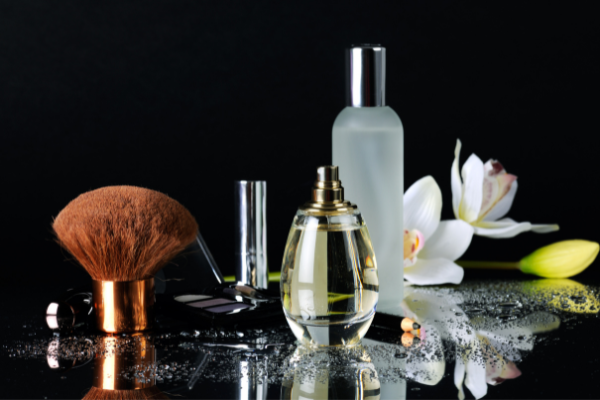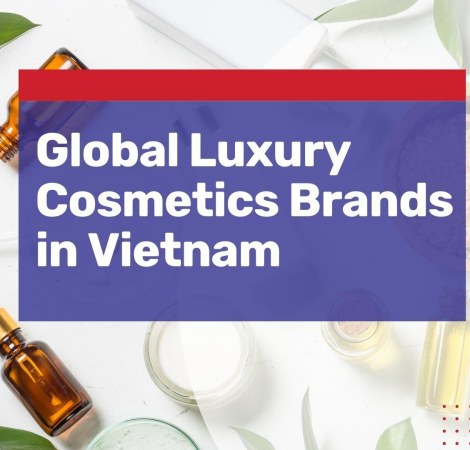Vietnam has the fastest-growing middle class in Southeast Asia, fueling demand for consumer goods, including those of an expensive nature. Despite the COVID-19 pandemic negatively impacting sales in 2020, a strong bounce back in 2022 means the revenue of the luxury cosmetic market in Vietnam is expected to increase as consumers begin to regain confidence in spending.
For example, Sephora, the beauty trailblazer with its prestigious luxury cosmetic products, has launched its first e-commerce store in the country. Consumers in Vietnam can now shop online for more than 70 brands in one place. These brands include Rare Beauty, Fresh, The Ordinary, Sephora Collection, among many others. Orders will be delivered directly to customers’ doorsteps from Singaporean warehouses.
Want to look into selling cosmetics in Vietnam? We offer Cosmetics Registration Services for importers like you!
Luxury Cosmetics Market Size & Recent Numbers
Statistically, Vietnam’s middle-class population is among Southeast Asia’s fastest-growing. Due to rising incomes, consumers are expected to demand more luxury goods, such as cosmetics and personal care products. About 30% of Vietnamese women wear lipstick every day, followed by cleansers, sunscreens, and masks, according to a survey conducted by Statista in 2020.
RELATED: Vietnam is Asia’s fastest-growing market for luxury goods
The value of Vietnamese personal care and beauty products was estimated at USD 2.3 billion in 2021, according to the report. With a growth rate of 5.9%, the market size is expected to clock USD 2.45 billion this year.
By 2025, the personal care and beauty products’ market in Vietnam is expected to generate revenues of USD 2.3 billion at a compound annual growth rate of 5.9%.
Cause for Vietnam’s market’s attraction
According to a report cited by Academia.edu Vietnam is considered one of the world’s most promising”emerging economies” going through significant changes, and so has a great deal of potential as a consumer market. Many Vietnamese people show a strong desire for luxury goods. The middle class is growing, living standards are improving, and income distribution is changing with a high growth rate.
Approximately 800 emerging urban consumers were surveyed by the National Economics University of Vietnam in Ha Noi and Ho Chi Minh city. The results indicate promising opportunities for foreign companies offering luxury products since the Vietnamese market has a high level of status-based consumption.

As a result of changes in consumer beliefs regarding material possessions and acquisition, Vietnamese consumers today believe that luxury objects serve as indicators of success and achievement, and can be a source of happiness for individuals. Local brands were also reported to be relatively low in preference over foreign brands among urban consumers. Foreign products offer symbolic value, which gives them an edge over their local counterparts, and consumers purchase foreign products to elevate their status.
Consumers in emerging economies, however, are price-sensitive, which presents challenges for luxury brands. Local products are more likely to be purchased by Vietnamese consumers when the country’s image, visibility, and quality are improved. This is especially true if they show a great deal of pride and identification with the country.
According to the previously mentioned report 45.39% of the country’s income is already generated by the 20% with the highest income. With growing power, they represent the main driving force of the economy despite being a small percentage of the population.
Although the super-rich category constitutes only 1% of the population, the upper-middle class is growing at an exponential rate.
Have you heard our podcast? Listen to our interview with the founder of the fashion startup “House of Aris”
Luxury Market Outlook: Different Sectors
Even though high duties on customs are a major barrier in their purchasing decision, female consumers spend a significant amount on cosmetics and body care products. Authenticity and quality are important to Vietnamese customers. The ground floors of department stores are generally reserved for cosmetics and perfume brands.
Creams and lotions that whiten the skin are the most privileged beauty care products. For example, Lancôme is launching new luxury products as part of its campaign, which details the stereotype of Asian women’s beauty compared to Western women. Additionally, anti-aging creams and conditioning products are very much in demand these days.
Challenges to the luxury market
A wide range of smuggled, uncontrolled fake and mislabeled products are the main challenge for luxury cosmetics brands in Vietnam. The products are usually targeted at low-income people, whose average annual cosmetics spending is USD 3. A total of USD 82 million was spent in 2006 by Vietnamese consumers on beauty and skin care products. 60% of these sales may consist of illegal imports.
There is a shift toward quality brand names among younger consumers, especially as their tastes and preferences mature. In response to the market’s future potential, foreign brands that have already entered the market are advertising aggressively. Increasing marketing and distribution efforts are helping local manufacturers compete with superior international brands in order to capture more market share. There are numerous opportunities for American companies in this rapidly growing market for finished beauty products, raw cosmetics materials, and related equipment.
RELATED: The 7 Most Asked Questions on Importing Cosmetics to Vietnam
Luxury Cosmetics Goods in Vietnam: Top brands
There has been an increase in the demand for beauty and health care among women in recent years. Following is a list of the top luxury cosmetic brands in Vietnam according to Toplist.
Estee Lauder is a brand of the Estee Lauder Group (USA), which was founded in 1946. Estee Lauder has a strong distribution system throughout Vietnam with a presence in all major commercial centers.
Founded in 1988 by a dermatologist named Zein Obagi, Obagi is a cosmetic brand from the US. Skincare products from Obagi include cosmetics and pharmaceuticals to support the treatment of skin problems from deep within and nourish the skin to become healthier and more beautiful.
Founded by Shu Uemura, the first successful Asian makeup artist in the West, Shu Uemura is a Japanese makeup cosmetic brand. There are many different kinds of products offered by Shu Uemura, not just cosmetics. In addition to creating cosmetic collections with impressive designs, the brand collaborates with famous designers.
Dior is a cosmetic line from the famous French brand Christian Dior. In Vietnam, Dior has five stores in Takashimaya (Ho Chi Minh City), Ho Chi Minh City, and Trang Tien plaza (Hanoi) Vincom Dong Khoi Shopping Center, Parkson Thai Ha (Hanoi) and Parkson Saigon Tourist.
About Us
Cekindo is a leading provider of global market entry services in Southeast Asia. We are part of InCorp group, a regional leader in corporate solutions, that encompasses 8 countries in Asia, headquartered in Singapore. With over 1,100 legal experts serving over 15,000 Corporate Clients across the region, our expertise speaks for itself. We provide transparent legal consulting, setup and advice based on local requirements to make your business perfectly fit into the market with healthy growth.
Don’t take our word for it. Read some reviews from some of our clients.
